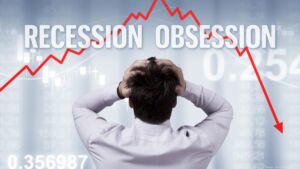Central banks were ostensibly designed to smooth out fluctuations in the economy and financial markets in order to avoid major financial crises. Unfortunately, they have done the exact opposite. Central bank interventions in markets around the world have created a series of booms and busts for decades. Now we’re in a market dominated by volatility and extremities. For example…
DXY has gone almost straight up from 89.50 in May 2021 to 104.50 today. The weekly RSI is at an extreme overbought 82. In the past 20 years, it has only been higher from September 2014 to March 2015. Why is this happening? The Fed is tightening while the ECB is still accommodative and the Bank of Japan continues with QE into perpetuity. The central banks caused this.
Since the Fed slashed its monetary stimulus and fiscal stimulus ended in August 2020, the 10-year bond yield has gone from 0.50% to 3.17%, the highest level since October 2018 and 2011 prior to that. It also must be one of the most dramatic spikes in yields since the 1970s.
The 10-Year real yield has gone from -1.15% on November 12, 2021, to +0.34% as of Tuesday, its highest level since the spike in March 2020.
The S&P hasn’t been this oversold on a weekly basis since March 2020. The Nasdaq is coming close to September 2008 levels in terms of capitulation. It is now down over 30% since its peak in November last when the Fed started talking about taper.
Oil went from zero—even below zero at one point in April 2020—to its highest level since 2008. It is at its most overbought on a monthly basis since 2008.
Copper went from $2 in March 2020 to a new record high of $5 two months ago. It has since fallen almost 20% and is at its most oversold on both a daily and weekly basis since March 2020.
Don’t even get me started on cryptocurrencies. Bitcoin is down 64% from its peak in November and at its lowest level since December 2020.
Silver may not have fallen as much, but it is now at its lowest since July 2020. Again, you have to go back to March 2020 to see when it was more oversold on a daily basis than it is today.
Finally, there is Gold. Two months ago, it came within a whisker of its record high of 2089, set in August 2020. It is now down in the mid-1800s, a drop of 12% from its peak. Although it could still go lower yet, it is looking remarkably resilient given what has happened in other markets. Premiums to buy precious metals remain elevated too.
The point being that all of this volatility was primarily driven by central bank policies, with a little help from governments around the world too. But now the elastic band is getting stretched to its breaking point. Something has got to give, and it’s up to the central banks yet again.
Either it’s the systemic collapse of everything globally or the Fed will once again reverse course sooner rather than later. If the former happens, those who hold physical precious metals will do far better than everyone else. The same can be said for the latter too.
While I lean towards another Fed 180, it’s a 60-40 probability, imho. But the timing of its decision can’t be much further away. Yields may have already peaked. The Nasdaq is down over 30%. Any further, and I don’t think even the mighty central banks can save these markets or the global economy from Depression.
With all of that said, don’t try to catch a falling knife. Wait for a break of resistance. The level to watch in Gold is 1911. In Silver, it’s 22.10, IMHO.

